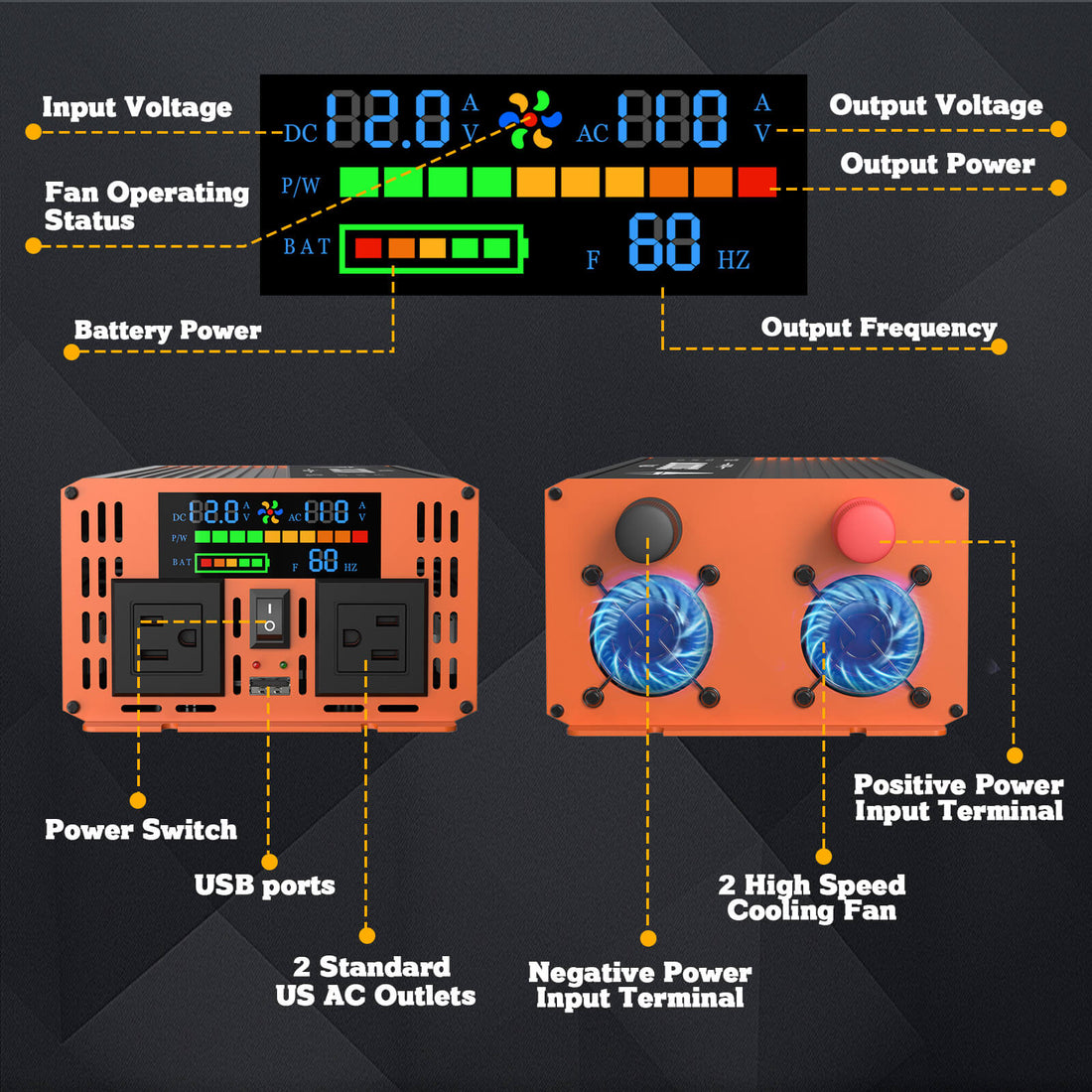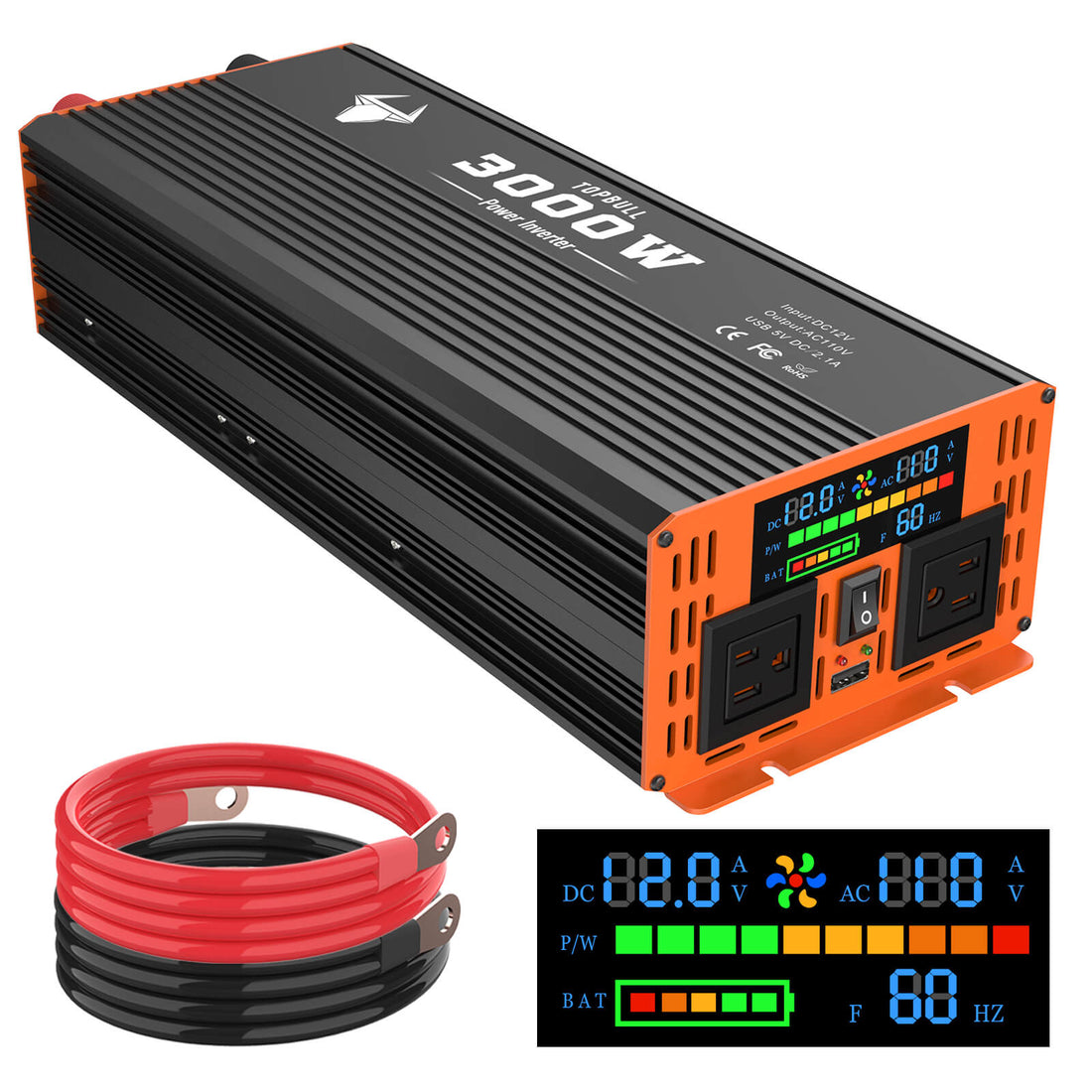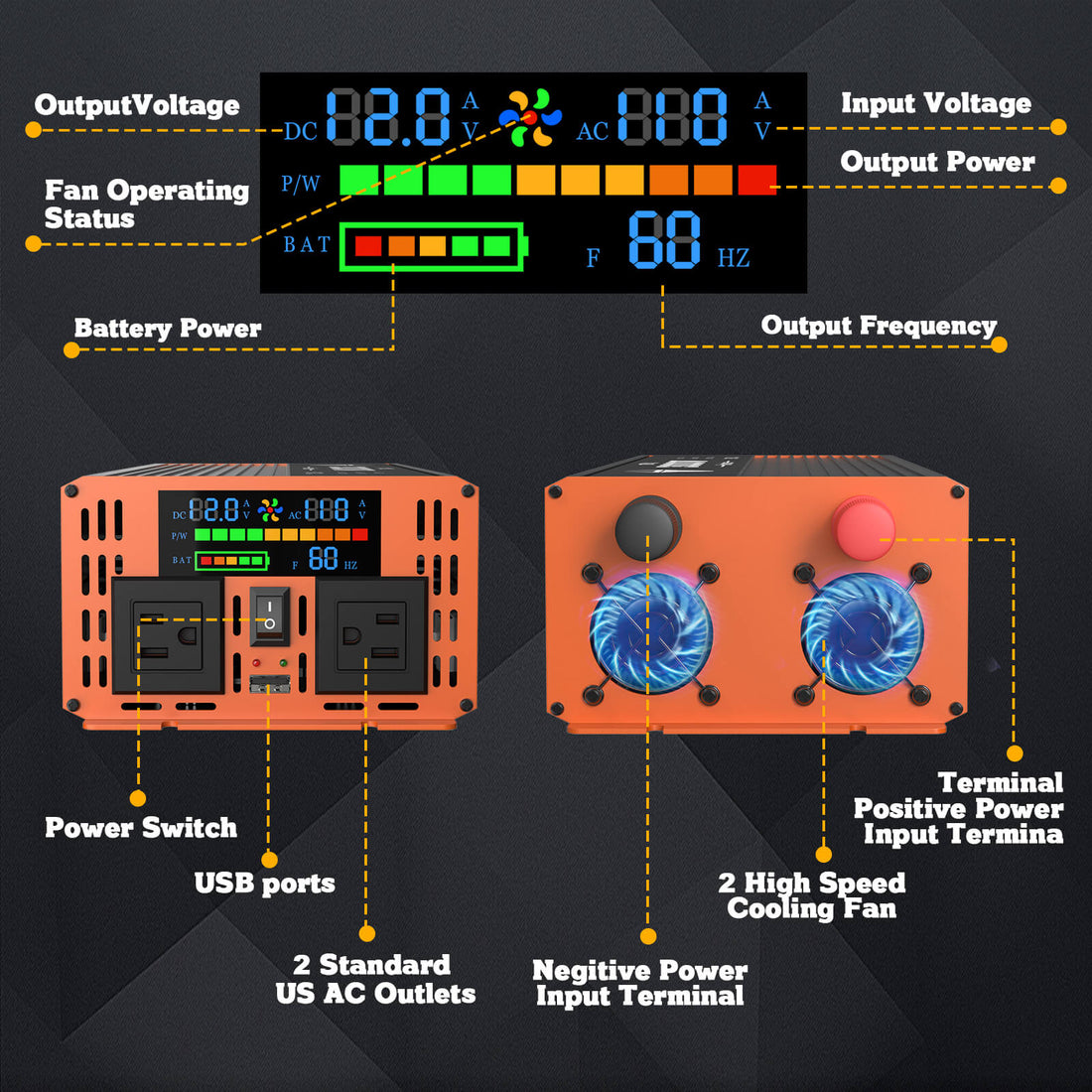Camper inverters
The best inverters for camping can efficiently convert 12-volt DC power into AC power for daily needs, they allow campers to use rice cookers, kettles, laptops, chargers, small fans, lighting fixtures, and a variety of other devices that require AC power. They have the features of efficient conversion, intelligent protection, compactness and portability, which make your campervan trip more free and peace of mind.
With an inverter and the proper power source (e.g., car battery, solar panel, etc.), campers can enjoy a power supply similar to the one they have at home.
- Featured
- Best selling
- Alphabetically, A-Z
- Alphabetically, Z-A
- Price, low to high
- Price, high to low
- Date, old to new
- Date, new to old
Recently Viewed Products
FAQs about Camper Inverters
What are the best inverters for campers?
For campers, the best inverters are usually pure sine wave inverters as they provide stable power suitable for most sensitive electronic devices. Depending on your needs, the power range should be between 1,000 and 3,000 watts.
What is the difference between an inverter and a generator?
An inverter converts direct current (such as from a battery) to alternating current (AC), whereas a generator typically uses fuel (such as gasoline or diesel) to produce AC power. Inverters are better suited to small devices powered from batteries, while generators provide a separate power source and are suitable for larger devices and long-term use.
What size inverter do I need to run my campervan?
The size of inverter required depends on the total power requirements of the equipment you plan to use. Generally, the inverter should be rated for more power than the total power of all your equipment, and it is more common to choose an inverter in the range of 1,000 watts to 3,000 watts.TopBull 3000W Pure Sine Wave Inverter, ideal for campervans, perfectly matches their power needs.
How does a camping inverter work?
A camping inverter works by converting direct current (DC) to alternating current (AC). It takes power from a battery charge (such as an RV battery) and converts it to a form of alternating current suitable for most appliances.Learn more about what an inverter is and how it works
How fast will the inverter drain my batteries?
The rate at which the inverter drains depends on the connected devices and their power consumption. For example, running a 200 watt device will drain the battery more slowly than running a 1500 watt device. In general, you can estimate the drain time based on the power of the device and the battery capacity. For example, using a 2000 watt inverter with a 100 AH battery, the maximum continuous operating time is approximately 0.5 hours.
Can I run my TV with the inverter?
Yes, the inverter can run the TV. Make sure you choose an inverter with enough power to meet the rated power requirements of your TV, usually between 50 and 200 watts for small TVs.
What size battery is required to run a 3000 watt inverter?
The capacity of the batteries when running a 3000 watt inverter depends on the duration of use and the needs of the unit. Typically, a deep cycle battery of at least 200AH or larger is recommended to ensure adequate power supply and to avoid draining the battery too quickly.
Does a campervan inverter require maintenance?
Campervan inverters generally require less maintenance, but check regularly for loose or frayed connections to ensure good power transfer. Keep the surface of the inverter clean and make sure it is well ventilated to prevent overheating.






















